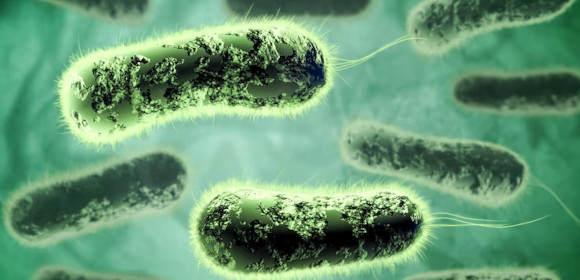Which of the following environments is most likely to harbor archaebacteria?
Freshwater lakes
Human skin
Volcanic hot springs
Temperate forests


The natural world is full of wonder and balance, as all organisms in a given area flourish together in perpetual cycles. Microorganisms are living animals that are very hard to observe due to their microscopic size. One of the most interesting types of microorganisms is called archaebacteria or archaea.



Archaebacteria or archaea is a specific kingdom of microorganisms that have special characteristics and functions in the environment they are present in. Not only are these archaeas very important in the conservation of the ecosystem, but these microorganisms can survive extreme temperatures and extreme environments due to special genomes.
Scientists have determined that archaebacteria or archaea are a specific species or classification of living microorganisms that we can observe in the natural world. Archaea have unique characteristics and structures that differentiate them from other microorganisms like eubacteria, and viruses.
Archaea have very similar cell structures to that of bacteria. This means you will need to use a microscope to check the cell structure of the microorganisms to differentiate it from the rest of the other types of microorganisms.
Both archaea and bacteria have flagella and cell walls in their cellular structure. This means that you will need to determine the presence of flagella and a cell wall to further differentiate the microorganism from the other types of microorganisms.
Archaea and bacteria share the same cellular structure, but their similarities end there. archaea have special and unique genes which lend to the distinctive characteristics of the microorganism. This means you will need to determine if the microorganism has special genes and adaptations to survive in extreme environments.
Ether lipid is a special characteristic of archaea that further differentiate them from bacterias. This means you will need to determine if there are ether lipids present in the cellular structure of the microorganism.
There are three types of archaebacteria or archaea that scientists have categorized and differentiated through their special and unique characteristics. The chrenarchaeota have special proteins and substances that compose their body, which allows this type of archaea to survive environments of extremely high temperatures (110 degrees celsius or 230 Fahrenheit) and highly acidic environments. Korarchaeota is archaea that have unique genes and are harder to find in nature. Scientists believe that the korarchaeota have similarities to the common ancestor that has evolved into the two other types of archaea. Euryarchaeota is archaea that has the special ability to convert traces of complex carbons in the area around it into molecules of methane. This occurs due to the archaebacteria’s ability to perform cellular respiration, which is the bacteria’s method of conversion.
Scientists have tagged and denoted archaebacteria or archea as the oldest organisms on Earth. These species are an ancient form of primitive microscopic life in a given ecosystem, biome, food chain, and food web. Not only are archaebacteria ancient, but these species have significantly contributed to the Earth’s biosphere and biodiversity. For example a lot of the euryarcheaota process complex carbon emissions and substances, which have provided a major amount of methane in the atmosphere. Some archaea scavenge dead carcasses and process them back into chemical energy, which plants use to grow and thrive. Therefore archaebacteria are significant and special, due to their ability to outlive most organisms on Earth and provide fundamental substances and elements in the environment around them.
Archaebacteria or archaea present a lot of benefits to the human body as they have specific processes and genes that will benefit their host. For example, the person’s skin requires nitrogen to lower skin PH levels and infection rate or chance. Due to some of the archaea’s abilities to survive in extreme environments and their anaerobic tendencies, these microscopic organisms can survive in areas of low oxygen. All of this means that archaea can survive in the person’s intestines and conduct processes that will help break down specific materials into absorbable elements and substances. In conclusion, a lot of our internal body processes rely on the presence and processes of archaea in and on the human body.
Archaebacteria or archaea are a specific specie of microorganisms that have been present since the beginning of life on the planet. All of the microorganisms scientists have labeled as archaea have a long lifespan and can survive extreme environments for long periods. Therefore, it is important to understand how these microorganisms exist and their interactions with the different organisms in the environment they are in.
Text prompt
Add Tone
10 Examples of Public speaking
20 Examples of Gas lighting
Which of the following environments is most likely to harbor archaebacteria?
Freshwater lakes
Human skin
Volcanic hot springs
Temperate forests
Archaebacteria are classified as:
Eukaryotes
Prokaryotes
Viruses
Protists
Which feature distinguishes archaebacteria from eubacteria?
Presence of peptidoglycan in the cell wall
Absence of cell membrane
Different ribosomal RNA sequences
Ability to photosynthesize
Which of the following is a characteristic of archaebacterial cell membranes?
Composed of fatty acids
Composed of isoprene chains
Lack of lipids
Contain peptidoglycan
Methanogens are a type of archaebacteria that produce:
Methane
Carbon dioxide
Oxygen
Nitrogen
Halophiles are archaebacteria that thrive in:
Acidic environments
Salty environments
Freshwater
Cold environments
Which archaebacteria are known for living in extremely hot environments?
Thermophiles
Psychrophiles
Acidophiles
Halophiles
Archaebacteria were first classified as a separate domain by:
Carl Linnaeus
Robert Koch
Carl Woese
Louis Pasteur
Which of the following processes is unique to some archaebacteria?
Photosynthesis
Methanogenesis
Nitrogen fixation
Fermentation
Archaebacteria are often found in extreme environments because:
They are highly adaptive
They outcompete other organisms
They cannot survive in mild environments
They require specific extreme conditions to thrive
Before you leave, take our quick quiz to enhance your learning!

